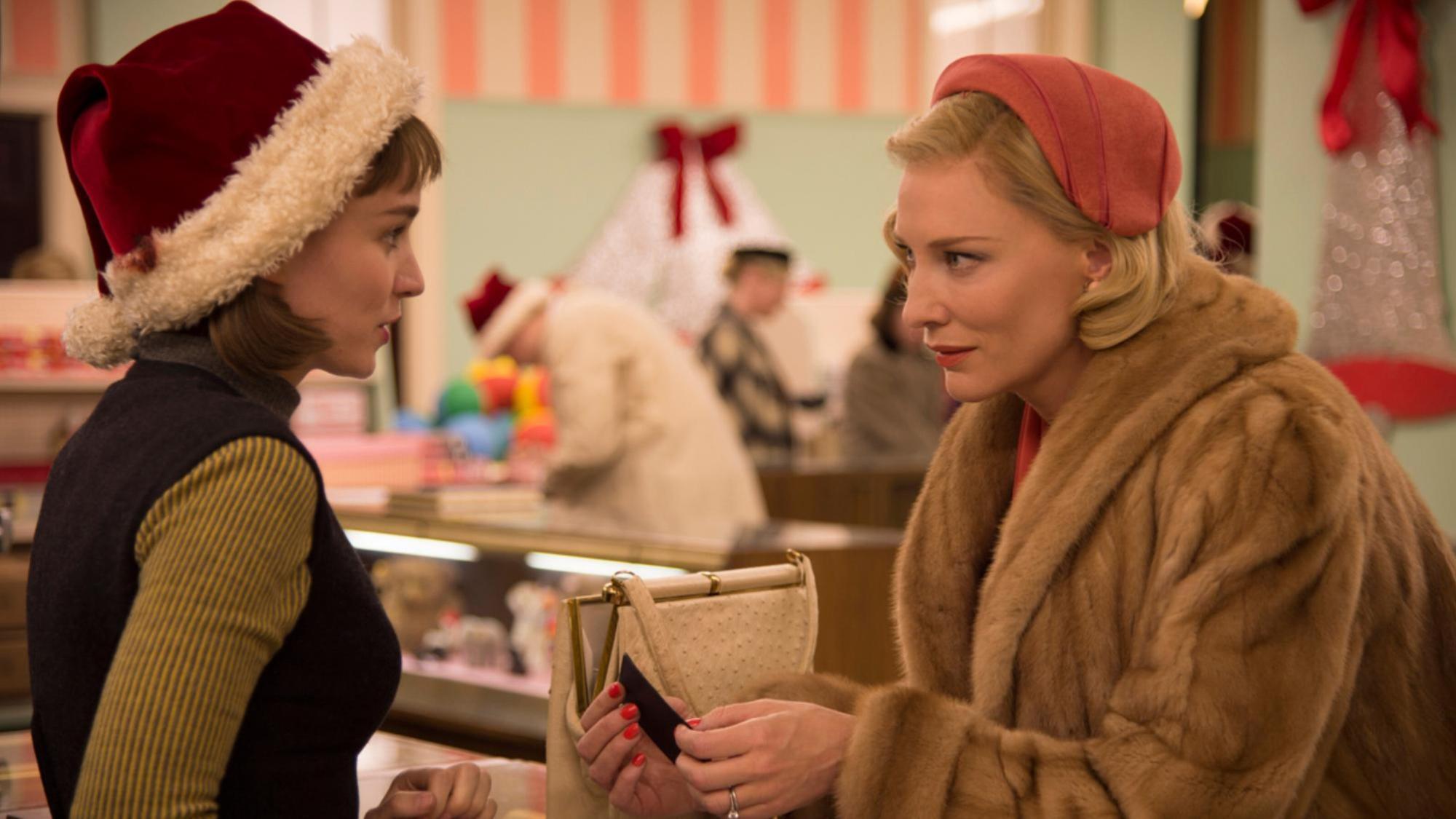2015 seemed like a pretty good year for LGBT film: Freeheld‘s casting director enlisted an actual lesbian, Ellen Page, to play one of the actual lesbians the film is based on (a serious feat, considering no openly queer actor has ever been awarded an Oscar for playing anyone — gay or straight). Sean Baker’s iPhone-shot trans indie Tangerine saw Caitlyn Jenner publicly back an Oscars campaign for its lead actress, Mya Taylor. Alicia Vikander nabbed an Oscar for her role in The Danish Girl, the story of trans pioneer Lili Elbe. And, after 15 years of financial struggle, Carol was finally released to enormous critical praise, garnering a combined 11 Oscar and Golden Globe nominations (though it won none of them).
But before we pat ourselves on the back, we should remember that each of these films was produced by an independent studio on a next-to-nothing budget (despite Rooney Mara and Cate Blanchett’s attachment to the project, director Todd Haynes created Carol with less than $12 million), and distributed in limited, largely metropolitan markets. When it comes to major studio productions, LGBT representation and diversity is actually getting worse.
This morning, GLAAD released its 2015 Studio Responsibility Index, an annual report that maps the “quantity, quality, and diversity of images of LGBT people” in films released by Hollywood’s seven largest studios during each calendar year. Two of those institutions — Paramount and Walt Disney Studios — completely excluded LGBT characters from their slates, the first time since GLAAD published its inaugural index that a major studio has had zero inclusive films.
Of the 126 releases from these studios in 2015, 17.5% of them (that’s 22 films) included characters who identified as lesbian, gay, bisexual, or transgender. That’s no change from the 17.5% of films (20 of 114) found to be inclusive last year. But in 73% of those 22 films, LGBT characters were given less than 10 minutes of screen time. Only one trans character appeared in a major studio release last year — Warner Brothers’ Hot Pursuit — but her brief appearance “served as a punchline to laugh at when her identity is revealed,” GLAAD reports.
To evaluate the quality of LGBT characters in the few films in which they are present at all, GLAAD uses the Vito Russo Test. To pass it, a film must contain an LGBT character whose existence is not solely determined by their sexual or gender identity (aka, they have unique traits otherwise used to differentiate straight people from one another), and whose removal would have a measurable effect on the film’s plot — “meaning they are not there to simply provide colorful commentary, paint urban authenticity, or (perhaps most commonly) set up a punchline,” says GLAAD. Only eight of the 22 films passed this test — a significantly lower percentage than any other year of GLAAD’s report.
Perhaps most discouraging is the “dismal” racial diversity of these few LGBT characters in film, which experienced a seven percentage point step backwards from last year’s improving data regarding queer characters of color. “Too often, these characters are isolated tokens, burdened with representing multiple communities through the view of one person, shutting down opportunities for unique storytelling which would allow a wider audience to see themselves reflected as a real and integral part of the world,” GLAAD reports. “Creators must tell the stories of our large and diverse community through the eyes of more than one character, thereby creating opportunities for compelling storylines.”
There really isn’t any excuse for major studios to systematically exclude and deride diverse characters. Conventional wisdom suggests that queer films don’t net box office returns like action adventure buddy comedies, but even that’s proving false. The Danish Girl has brought in close to $65 million against its $15 million budget — certainly a more profitable investment than Hot Pursuit, a film that only earned $51 million against its $35 million budget, and at the expense of the dignity of the lone trans character who appeared in major studio releases.
Were it not for the viral #OscarsSoWhite outcry from film fans across the world, the industry wouldn’t be crucially restructuring itself to better represent and recognize the achievements of people of color both on and off screen. It’s that same public pressure for more equal entertainment that’s presently changing the course of television, where fans have demanded greater dignity for the lives of LGBT characters — a call to action that’s united industry power players to make a change. It’s clear equality is possible, we just need to be loud and proud.
Credits
Text Emily Manning
Image © 2015 The Weinstein Company. All rights reserved.
